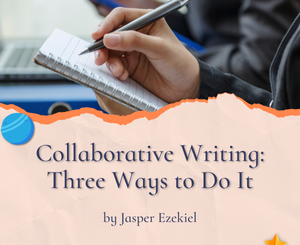CRAFT: A Good Book is in the Details
 Today is #1 is a series of posts on the Craft of Writing. Welcome!
Today is #1 is a series of posts on the Craft of Writing. Welcome!
I’ll let you in on a little secret. I’ve been writing about writing for years, but rarely, if at all, have I written about the craft of writing. Why? Well, there are so many books out there on the topic, and my novel has come out yet, and… I could go on and on about the excuses. But I won’t. What I’ve realized recently is that I’m a damn good writer and editor. I know what works, what doesn’t, and most of all, I care about making writing, mine and yours, better. Because I’m here on this planet to help writers and all of us get what we want. What would you like? And the greatest tool we have to getting what we want is clarity: in words and images. Here’s to getting and being clear! Okay, onto this week’s craft post!
As I stated in yesterday’s post, many of us read to escape.
As authors it’s our job to provide that escape to our readers.
Many authors get caught up in telling the reader about an experience. But actually what creates the experience of escape is allowing us to feel the story.
One way we can do this — besides compelling characters and story — is strong and specific details.
Strong as in an immediate feeling or image comes to mind. As in, “I don’t have to think about it. The image or feeling pop right away.”
Specific as in our images and feelings are clear and distinct.
Get specific in our verbs and nouns.
Which is more specific?
She walked across the room.
She ambled across the marble foyer like she owned the place.
*Okay, so in the second I added even more specificity. Got a clearer picture than the first sentence, right?
Sometimes, we are specific enough, and we want to change the texture and feel of the phrasing, for example:
Henrietta fast-walked away from the tavern, fists clenched so hard they hurt.
Henrietta dashed from the tavern, her fists clenched so hard they shook.
*From my forthcoming novel, Henrietta the Dragon Slayer. Yep, I’m making last minute tweaks.
Get miserly about your adjectives and adverbs.
I have to agree with Stephen King on this one. Check out his wonderful book, On Writing, to read his rant against adjective and adverbs.
Essentially don’t use them, much. Instead, reach for a noun that colors or grab a verb that creates the picture or feeling the way you want it to.
We need to give our readers a specific experience so they can find themselves in the details. Ironically, it works!
When I work with beginning authors, I’m often asking them:
“Where is this happening? When? And how is she holding that cup? Gripping, clasping, hugging it to her chest, cradling it? And is it a cup or a mug or a glass?”
As writers, we have so many choices!
And it’s our job to choose specifically the details that will make our story come alive, that will enable to reader to do the magical thing of slipping past the words and into the story.
In the end, if we’ve done our job right, our words that we’ve labored over so much disappear, evaporate, and all that’s left is story.
Our job is magic, my friends!






